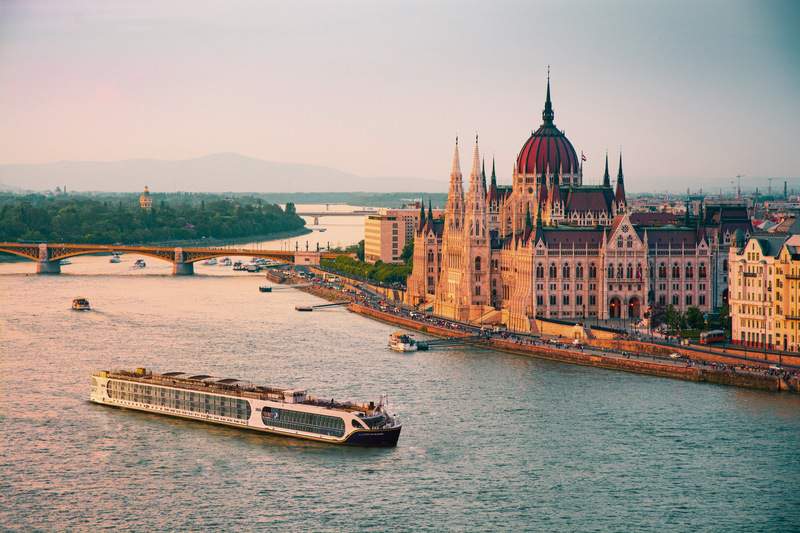Saga Group has successfully navigated post-pandemic challenges to see its river cruise operations return to profitability.
This positive outcome reflects the strong demand across its travel brands, demonstrating the group’s effective recovery strategies.
Financial Recovery and Market Performance
Saga Group’s river cruise operations have shown a notable turnaround, marking a return to profitability for the first time since the pandemic. This achievement is seen as a component of the broader financial renaissance within the company. Detailed financial updates reveal a strong consumer demand across all of Saga’s travel brands, reinforcing their robust recovery.”Ocean cruise had an outstanding year and, as a result, we far exceeded our initial earnings targets, while river cruise and travel both returned to profit for the first time since the pandemic,” said CEO Mike Hazell.
The ocean cruise division reported an underlying profit before tax amounting to £35.5 million, which starkly contrasts with an underlying loss before tax of £0.7 million the previous year. This success reflects a substantial improvement of £36.2 million year on year. River cruise operations saw an impressive year-on-year profit increase of £8.1 million, with revenues reaching 52% of the figures from 2022.
Strategic Bookings and Growth Projections
Saga Group’s bookings for the next financial year present a promising outlook for sustained growth. Bookings for the ocean cruise services boast a load factor of 78%, coupled with a per diem of £3,679 already set for 2024/25. Both metrics signify substantial progress over the previous year’s benchmarks.
In parallel, the river cruise bookings have also surged ahead of last year’s figures, showcasing a significant improvement. The current load factor stands at 72% with a per diem of £3,399, a marked rise from 66% and £2,999 respectively recorded last year. This substantial growth demonstrates Saga’s strategic positioning and market capture.
Saga’s commitment to reducing leverage and enhancing strategic flexibility remains unwavering. As part of this strategic foresight, the company earlier this year announced plans to augment its river cruise fleet. The introduction of a new ship, the Spirit of the Moselle, is anticipated in July 2025, which is expected to further enhance operational capacity and market reach.
Challenges and Strategic Initiatives
While Saga has made significant strides, challenges remain in adjusting to evolving market dynamics. The company’s strategy focuses on accelerating growth while optimising current capacities to meet increasing customer demands.
CEO Mike Hazell highlighted that the current business is nearing optimal capacity, urging the evaluation of new routes to maintain growth momentum. Saga’s approach encompasses both organic growth and strategic investments to fortify its competitive positioning.
Emphasising operational enhancements, the group is actively exploring options for new partnerships within the ocean cruise sector. Such collaborations aim to broaden service offerings and improve customer experiences, aligning with the overarching objective of meeting and exceeding market expectations.
Fleet Expansion Plans
In response to favourable market conditions, Saga has outlined plans to expand its operational fleet. This initiative includes the introduction of the Spirit of the Moselle, a river cruise ship set to join the fleet in July 2025. This move is indicative of Saga’s proactive approach to capitalising on emerging market opportunities and reinforcing its market presence.
The fleet expansion is expected not only to increase capacity but also to enhance service versatility, thereby catering to diversified customer preferences. Saga’s strategic expansion aligns with its long-term growth objectives and commitment to maintaining industry leadership.
Customer Demand and Market Trends
Saga’s performance is underpinned by sustained customer demand across cruise and travel segments. This demand is expected to continue, supported by an encouraging pipeline of bookings for the coming years.
Market trends indicate a growing preference for bespoke cruising experiences, which Saga is well-positioned to deliver. The company’s adaptability to customer preferences is reflected in its competitive offerings and innovative service models.
The strong forward bookings underline the brand’s resilience and its ability to capture emerging travel trends. As the market evolves, Saga continues to anticipate and respond to customer needs, reinforcing its strategic market position.
Financial Objectives and Future Outlook
Saga remains committed to its financial objectives of reducing leverage while enhancing strategic flexibility. This focus is expected to play a pivotal role in sustaining profitability and supporting the company’s expansive growth plans.
Future financial outlooks are promising as Saga continues to build on its recovery momentum. The strategic initiatives and investments currently underway are poised to propel the brand further into profitability in the upcoming fiscal periods.
Conclusion
Saga Group’s strategic initiatives and robust recovery underscore a confident outlook for its cruise and travel segments. The continued demand and financial gains mark a significant milestone in its post-pandemic resurgence.
Saga Group’s strategic initiatives and robust recovery underscore a confident outlook for its cruise and travel segments. The continued demand and financial gains mark a significant milestone in its post-pandemic resurgence.

